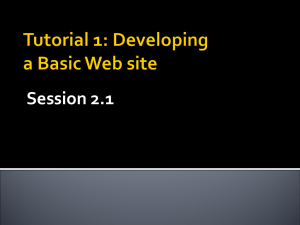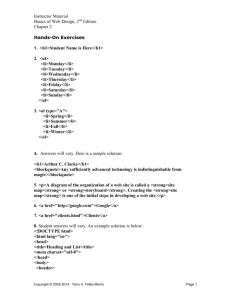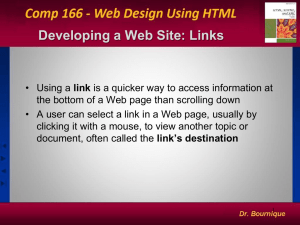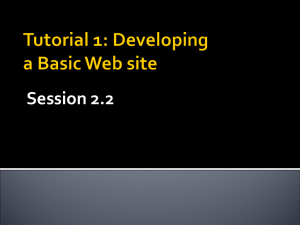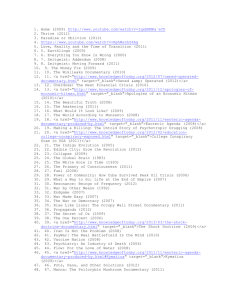WuG_0336_20151004_Risky_Paris_COP_2_v0
advertisement
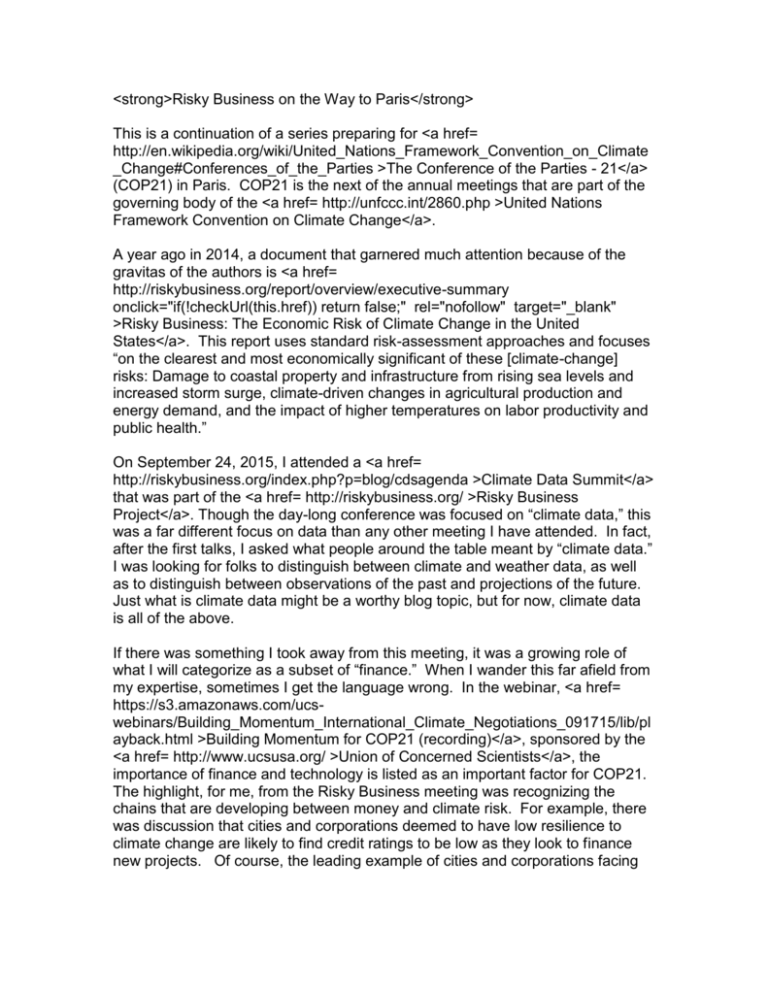
<strong>Risky Business on the Way to Paris</strong> This is a continuation of a series preparing for <a href= http://en.wikipedia.org/wiki/United_Nations_Framework_Convention_on_Climate _Change#Conferences_of_the_Parties >The Conference of the Parties - 21</a> (COP21) in Paris. COP21 is the next of the annual meetings that are part of the governing body of the <a href= http://unfccc.int/2860.php >United Nations Framework Convention on Climate Change</a>. A year ago in 2014, a document that garnered much attention because of the gravitas of the authors is <a href= http://riskybusiness.org/report/overview/executive-summary onclick="if(!checkUrl(this.href)) return false;" rel="nofollow" target="_blank" >Risky Business: The Economic Risk of Climate Change in the United States</a>. This report uses standard risk-assessment approaches and focuses “on the clearest and most economically significant of these [climate-change] risks: Damage to coastal property and infrastructure from rising sea levels and increased storm surge, climate-driven changes in agricultural production and energy demand, and the impact of higher temperatures on labor productivity and public health.” On September 24, 2015, I attended a <a href= http://riskybusiness.org/index.php?p=blog/cdsagenda >Climate Data Summit</a> that was part of the <a href= http://riskybusiness.org/ >Risky Business Project</a>. Though the day-long conference was focused on “climate data,” this was a far different focus on data than any other meeting I have attended. In fact, after the first talks, I asked what people around the table meant by “climate data.” I was looking for folks to distinguish between climate and weather data, as well as to distinguish between observations of the past and projections of the future. Just what is climate data might be a worthy blog topic, but for now, climate data is all of the above. If there was something I took away from this meeting, it was a growing role of what I will categorize as a subset of “finance.” When I wander this far afield from my expertise, sometimes I get the language wrong. In the webinar, <a href= https://s3.amazonaws.com/ucswebinars/Building_Momentum_International_Climate_Negotiations_091715/lib/pl ayback.html >Building Momentum for COP21 (recording)</a>, sponsored by the <a href= http://www.ucsusa.org/ >Union of Concerned Scientists</a>, the importance of finance and technology is listed as an important factor for COP21. The highlight, for me, from the Risky Business meeting was recognizing the chains that are developing between money and climate risk. For example, there was discussion that cities and corporations deemed to have low resilience to climate change are likely to find credit ratings to be low as they look to finance new projects. Of course, the leading example of cities and corporations facing the most immediate credit challenges would be those vulnerable to sea level rise and storm surges. I want to unpack that previous paragraph a little bit, with some resources that are, perhaps, new to many of my readers and colleagues. I will start with the engineering firm <a href= http://pbworld.com/ >WSB/Parsons Brinckerhoff</a>. They have a technical publication <a href= http://network-pbworld.wspgroup.com/ >Network</a>, and their September 2015 issue is on resilience. For this purpose, resilience is defined as the capacity to withstand stress and catastrophe. In their <a href= http://networkpbworld.wspgroup.com/tag/resilience?pageSize=36 >issue on resilience</a> there are numerous articles on climate change, and perhaps a place to start is the article, <a href= http://network-pbworld.wspgroup.com/article/a-systemsapproach-to-climate-change-adaptation >A systems approach to climate-change adaptation</a>. This is not an article of immense detail, but it lays out a framework for thinking about adaptation and engineering projects – what do I have to consider? My purpose for introducing resilience, here, is to identify resilience as part of the chain linking finance to climate and climate change – not to explore resilience. If resilience is to be part of the value chain, then there will be some requirement to measure resilience. One approach to evaluating resilience comes from the <a href= http://www.gain.org >University of Notre Dame Global Adaptation Index (ND-GAIN)</a>. (Description of <a href= http://phys.org/news/2014-02quantifying-global-chain-due-climate.html >ND-GAIN at phys.org</a>) This index, which uses information from the <a href= http://www.worldbank.org/en/topic/climatefinance >World Bank</a>, “summarizes a country's vulnerability to climate change and other global challenges in combination with its readiness to improve resilience. It aims to help businesses and the public sector better prioritize investments for a more efficient response to the immediate global challenges ahead.” (<a href= https://www.youtube.com/watch?t=23&v=qY2jws_10gg >Video (youtube): Decision-making in the face of global shifts</a>) An important link between resilience and markets is reinsurance. Reinsurance is insurance purchased by insurance companies to help them manage risk and exposure. (You can bet there was a lot of business this past week with <a href= http://www.wunderground.com/blog/JeffMasters/comment.html?entrynum=3130 >Hurricane Joaquin and the South Carolina floods</a>.) There is a nice 2006 article by <a href= https://www.wilsoncenter.org/sites/default/files/Paperhaulfler.pdf >Virginia Haufler on "Insurance and Reinsurance in a Changing Climate"</a>, which reviews the leading interest in climate change taken by this financial sector. There is also a interesting contrast between the United States and Europe, with the United States approach leaving more of the risk to federal, state, and local governments. The percentage of risk that is covered in natural disasters is decreasing. There is concern that the cost of disasters is increasing, and that climate change is multiplying that increase. Hence, leading us to an unsustainable situation. The reinsurance business has been especially prominent in climate change, and practically the poster child of business at conferences on business and climate change. Swiss Re has a good section on <a href= http://www.swissre.com/rethinking/climate_and_natural_disaster_risk/ >Managing climate and financial Risk</a>. Likewise, <a href= http://www.munichre.com/en/group/focus/climate-change/index.html >Munich Re</a> has climate change as a focus and describe the <a href= http://www.munichre.com/en/group/focus/climate-change/viewpoints/road-toparis/index.html >Road to Paris from their perspective</a>. It becomes obvious, I hope, that given that financing municipal, federal, and corporate projects requires insurance (or, perhaps, the ability to print money), that resilience and the interests of the insurers will have a profound impact on the credit worthiness of projects and the cost of money. The prominent emergence of this link of climate and credit is part of a rapidly advancing change on our approach to dealing with climate change. (Might make a citizen worry about such things as <a href= https://en.m.wikipedia.org/wiki/Citizens_Property_Insurance_Corporation >Citizens Property Insurance Corporation</a>) I want to end with a different link to finance. In a recent interview <a href= http://www.bbc.com/news/business-34396969 >Mark Carney, the Governor of the Bank of England</a> stated millions of pounds (of the dollar type) of loans to energy companies and mining companies will need to be reconsidered because of their relation to climate change. At the meeting I attended in New York and throughout the links I have provided, a theme can be found of the fiduciary responsibility of, say, pension fund managers. They need to consider the risks associated with climate change, including the public’s increasing concern about the long-term viability of fossil fuel stocks. In the article Carney is quoted as saying, "climate change will threaten financial resilience and longer term prosperity". And further, "While there is time to act, the window of opportunity is finite and shrinking." That brings me to <a href= >divestment movements at universities</a>. Since I last wrote about divestment, the advocacy organization <a href= http://gofossilfree.org/ >Go Fossil Free</a> counts that divestment efforts have grown from $ 50 billion to $ 2.6 trillion. Though I am not able to make an accurate accounting of whether that is what is in play, what is committed, or what has happened, I have no doubt that the number of institutions and the number of dollars in the mix has increased tremendously. I also have no doubt that the pension fund managers and the institutional investors are looking at their constituencies and the climate change risk that comes directly from the climate or from climate-related financial risk – plus, persistently low oil prices – and seeing a different world emerging. I hope to do a divestment update in the next few weeks. I thank <a href= http://podcasts.personallifemedia.com/hosts/204duncan-campbell >Duncan Campbell</a> for providing me materials I heard on his radio show <a href= http://kgnu.org/connections >Connections</a> where you can listen to an <a href= http://www.kgnu.org/forcedownload.php?mp3file=Connections/2015/Connections _2015-10-02.mp3 >interesting panel discussion about climate change, finance, and fracking</a>. Below I list some of my previous blogs that included business and finance. r <strong>Previous blogs that have touched on finance and climate change</strong> <a href= http://www.wunderground.com/blog/RickyRood/comment.html?entrynum=333 >Why I support student fossil-fuel divestment campaigns</a> <a href= http://www.wunderground.com/blog/RickyRood/comment.html?entrynum=312 >Just What is the New York Climate Summit?</a> <a href= http://www.wunderground.com/blog/RickyRood/comment.html?entrynum=269 >Reaction to President Obama’s Speech: A U.S. Climate Action Plan?</a> <a href= http://www.wunderground.com/blog/RickyRood/comment.html?entrynum=211 >Durban – Conference of the Parties – An Ethical Problem </a> <a href= http://www.wunderground.com/blog/RickyRood/comment.html?entrynum=210 >Extreme Weather: Can we use predictions to plan</a> <a href= http://www.wunderground.com/blog/RickyRood/comment.html?entrynum=144 >From Copenhagen: What’s going on here?</a> <a href= http://www.wunderground.com/blog/RickyRood/comment.html?entrynum=43 >Ancient blog alert: Business and Climate</a> <img src= http://climateknowledge.org/figures/WuGblog_figures/RBRWuG0145_Ton_of_Ca rbon_Dioxide.JPG width="640" height="480" alt="" /> <em>Figure 1: A ton of carbon dioxide in Copenhagen. It’s still about the same size and we have a lot more of them in the atmosphere.</em>
